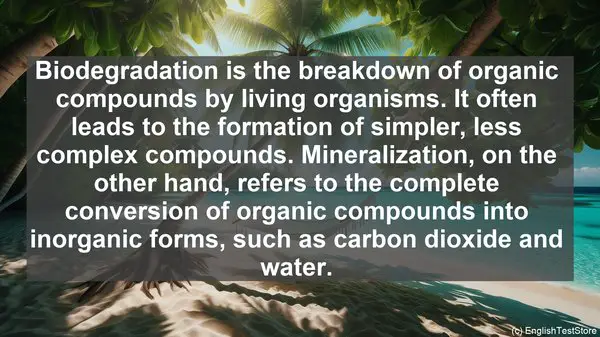Introduction: The Importance of Word Choice
Welcome to today’s lesson on the top 10 commonly confused words in organic geochemistry. While it may seem trivial, the precise use of words is essential in this field. A slight mix-up can lead to misinterpretations and flawed conclusions. So, let’s dive in!

1. Isomer vs. Homolog
Isomers are compounds with the same molecular formula but different structural arrangements. On the other hand, homologs are a series of compounds with similar structures, differing by a repeating unit. Remember, isomers vary in structure, while homologs have a structural pattern.
2. Alkane vs. Alkene
Alkanes are hydrocarbons with single bonds, while alkenes have at least one double bond. The presence of a double bond in alkenes gives them a higher reactivity compared to alkanes. So, when discussing reactivity, it’s crucial to differentiate between the two.
3. Aromatic vs. Aliphatic
Aromatic compounds, like benzene, have a ring structure with alternating double bonds. In contrast, aliphatic compounds lack this ring structure. The distinction is vital, as aromatic compounds often exhibit unique properties and reactions.
4. Isotope vs. Isomer
Isotopes are atoms of the same element with different numbers of neutrons. They have the same chemical properties but differ in atomic mass. Isomers, as we discussed earlier, are compounds with the same molecular formula but different structures. Remember, isotopes are about atoms, while isomers are about compounds.
5. Hydrolysis vs. Hydration
Hydrolysis involves the breaking of chemical bonds through the addition of water. It’s a crucial process in organic geochemistry. On the other hand, hydration refers to the addition of water molecules without bond cleavage. Remember, hydrolysis involves bond breaking, while hydration does not.
6. Oxidation vs. Reduction
Oxidation is the loss of electrons or an increase in oxidation state, while reduction is the gain of electrons or a decrease in oxidation state. These processes are fundamental in organic geochemistry, as they often dictate the transformation of compounds.
7. Volatile vs. Non-volatile
Volatile compounds have a high vapor pressure and readily evaporate at room temperature. Non-volatile compounds, on the other hand, have low vapor pressures and do not evaporate easily. The distinction is crucial when considering the fate and transport of compounds in the environment.

8. Adsorption vs. Absorption
Adsorption refers to the adhesion of molecules onto a surface, often due to attractive forces. Absorption, on the other hand, involves the uptake of molecules into the bulk of a material. Remember, adsorption is about surface attachment, while absorption is about uptake into the material.
9. Biodegradation vs. Mineralization
Biodegradation is the breakdown of organic compounds by living organisms. It often leads to the formation of simpler, less complex compounds. Mineralization, on the other hand, refers to the complete conversion of organic compounds into inorganic forms, such as carbon dioxide and water.
10. Primary vs. Secondary Pollution
Primary pollution refers to pollutants directly emitted into the environment, such as from a smokestack. Secondary pollution, on the other hand, is formed through chemical reactions in the atmosphere. Understanding this distinction is crucial when assessing pollution sources and their impacts.
